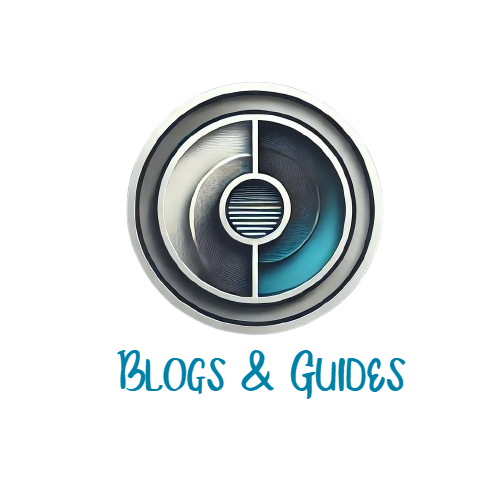In the evolving landscape of UK construction, accurate and transparent cost management is crucial for success. One of the key tools that professionals use to ensure consistency and clarity in the pricing and costing of construction projects is the New Rules of Measurement. Published by the Royal Institution of Chartered Surveyors (RICS), the New Rules of Measurement provides a comprehensive framework for cost management across various phases of a construction project.
This blog post will delve into the three key sections of the New Rules of Measurement—NRM 1, NRM 2, and NRM 3—each serving a specific purpose within the lifecycle of a construction project. We will discuss when and how to use each set of rules, the critical information they provide, and their importance for project success. Additionally, we will cover how risks are managed within the framework and provide explanations for key terms used throughout the New Rules of Measurement.
1. NRM 1 – Order of Cost Estimating and Cost Planning for Capital Building Works
NRM 1 provides guidance for preparing estimates and cost plans during the early stages of a construction project. It is an essential tool used during the feasibility and concept design phases to provide a framework for preparing accurate Order of Cost Estimates and Elemental Cost Plans. The goal is to offer a structured way to predict project costs before detailed design work is completed, helping both clients and contractors plan effectively and avoid cost overruns.
When is NRM 1 Used?
- Feasibility Stage: Initial estimates to check whether a project is financially viable.
- Pre-Design and Design Development: As the design evolves, NRM 1 helps in creating cost plans that reflect the project’s development.
- Cost Planning: It aids in tracking changes and ensuring that the project remains within the client’s budget.
Key Information in NRM 1:
- Elemental Breakdown of Costs: It organizes costs by elements, such as substructure, superstructure, finishes, and services, providing a clear understanding of where funds are allocated.
- Preliminaries: This includes items such as site establishment, supervision, insurances, and safety measures.
- Risk Allowances: Guidance on how to incorporate risk contingencies to account for unforeseen expenses.
- Overheads and Profit: Provides a basis for calculating allowances for contractor overheads and profit.
2. NRM 2 – Detailed Measurement for Building Works
Where NRM 1 focuses on cost estimating, NRM 2 provides detailed guidance for preparing Bills of Quantities (BoQ) and comprehensive Measured Work Pricing. It is used once the design phase is sufficiently advanced and detailed measurements of quantities can be taken from the design drawings.
When is NRM 2 Used?
- Tendering Phase: It is mainly used for preparing accurate and detailed Bills of Quantities, which can then be priced by contractors.
- Construction Stage: During the construction phase, NRM 2 helps ensure that all work done is properly measured, accounted for, and valued.
Key Information in NRM 2:
- Measurement Rules: Detailed rules on how to measure various elements of a construction project, from foundations to roofing and finishes.
- Bills of Quantities (BoQ): It lays down the structure for BoQ, making sure that all work required is fully documented and described.
- Work Sections and Classification: Each section of the BoQ is divided according to work types (e.g., masonry, roofing, electrical, etc.), offering a clear method for pricing work accurately.
- Tender Documentation: Guidance on ensuring that all tender documents, including pricing schedules and specifications, align with the BoQ.
3. NRM 3 – Order of Cost Estimating and Cost Planning for Building Maintenance Works
NRM 3 focuses on the cost estimating and planning for building maintenance works, post-construction. Maintenance can often be overlooked in early cost planning, but the NRM 3 framework ensures that accurate life-cycle costs, including planned maintenance, are considered from the start.
When is NRM 3 Used?
- Building Maintenance Planning: NRM 3 is invaluable for planning long-term building maintenance and calculating life-cycle costs.
- Asset Management: For clients managing large property portfolios, NRM 3 provides a structured way to budget for ongoing maintenance and repairs.
- Post-Occupancy Phase: It can be used once the building is in use to estimate the costs of maintenance tasks and replacements over its life cycle.
Key Information in NRM 3:
- Life Cycle Costs: This includes periodic and planned maintenance costs, repair costs, and replacement costs over the asset’s lifespan.
- Planned Preventive Maintenance (PPM): NRM 3 helps establish a framework for identifying and planning PPM tasks.
- Long-Term Budgets: By considering life-cycle costs, it allows building owners to plan budgets for maintenance years in advance.
- Obsolescence and Deterioration: Guidance on how to account for the depreciation and eventual replacement of building elements.
Managing Risk within the New Rules of Measurement
Risk management is a critical element in any construction project, and the New Rules of Measurement provides a structured approach to addressing risks throughout the project lifecycle. Each section of the New Rules of Measurement incorporates risk considerations that are specific to the phase of the project, whether during early cost planning, detailed measurement, or maintenance.
Types of Risks Considered in the New Rules of Measurement:
- Design Risk:
- This refers to the risks associated with incomplete, evolving, or inaccurate design information that may affect cost planning or quantity measurement.
- Addressed in NRM 1, with guidance on incorporating contingencies for incomplete designs.
- Construction Risk:
- These are risks related to site conditions, unforeseen issues during construction, or variations in construction methods.
- NRM 2 advises on incorporating risk allowances in the Bills of Quantities for potential changes in scope or delays.
- Client-Specific Risk:
- Risks stemming from client-driven changes, such as modifications to the project scope or materials after construction has started.
- Both NRM 1 and NRM 2 provide methods for adding allowances for such changes.
- Maintenance and Operational Risks:
- Risks associated with the ongoing use, deterioration, or obsolescence of the building’s components.
- NRM 3 includes provisions for incorporating risk factors related to long-term maintenance and replacement costs.
Risk Categories:
- Contingency Allowance: A sum included to cover unforeseen elements that may arise.
- Design Development Risk: Factors that account for changes or further details added as the design progresses.
- Construction Risk: Risk allowances for factors that may increase costs during the build, such as unexpected site conditions.
- Maintenance Risk: Risks linked to long-term upkeep, including obsolescence or degradation of materials and systems.
Key Terms in the New Rules of Measurement
To effectively navigate and apply the New Rules of Measurement, it’s essential to understand some of the key terms commonly used:
- Cost Limit:
- This refers to the maximum budget that the client is prepared to spend on a project. It encompasses all costs related to the project, including construction, professional fees, and contingencies.
- Base Cost Estimate:
- A key term in NRM 1, this is an estimate of the total cost of the project before allowances for risk, inflation, and client-specific requirements are included. It forms the foundation upon which risk allowances and additional costs are added.
- Elemental Cost Plan:
- Used in NRM 1, this is a breakdown of the project cost according to elements (e.g., foundations, walls, finishes), allowing for detailed tracking of expenditures as the design develops.
- Bill of Quantities (BoQ):
- A document prepared under NRM 2, which provides detailed measurements and descriptions of the quantities of work required, used for tendering and pricing.
- Preliminaries:
- A section in the Bill of Quantities that accounts for site setup, administration, temporary works, and other overheads not directly related to the building itself.
- Life Cycle Costs:
- In NRM 3, life cycle costs refer to the total cost of owning, operating, maintaining, and eventually replacing building components over the life of the asset.
Conclusion: How the New Rules of Measurement Benefit Construction Projects
The New Rules of Measurement provides a robust and comprehensive framework for managing the costs of construction projects at every stage—from feasibility and tendering to construction and long-term maintenance. By understanding how to apply the principles in NRM 1, NRM 2, and NRM 3, construction professionals can ensure projects remain on budget, all works are properly documented, and building maintenance is planned effectively.
For UK construction businesses, adopting the New Rules of Measurement suite helps avoid budget overruns, improves transparency, and provides a strong foundation for risk management. This structured approach ensures successful project delivery and strengthens relationships with clients by improving cost certainty and accountability.







